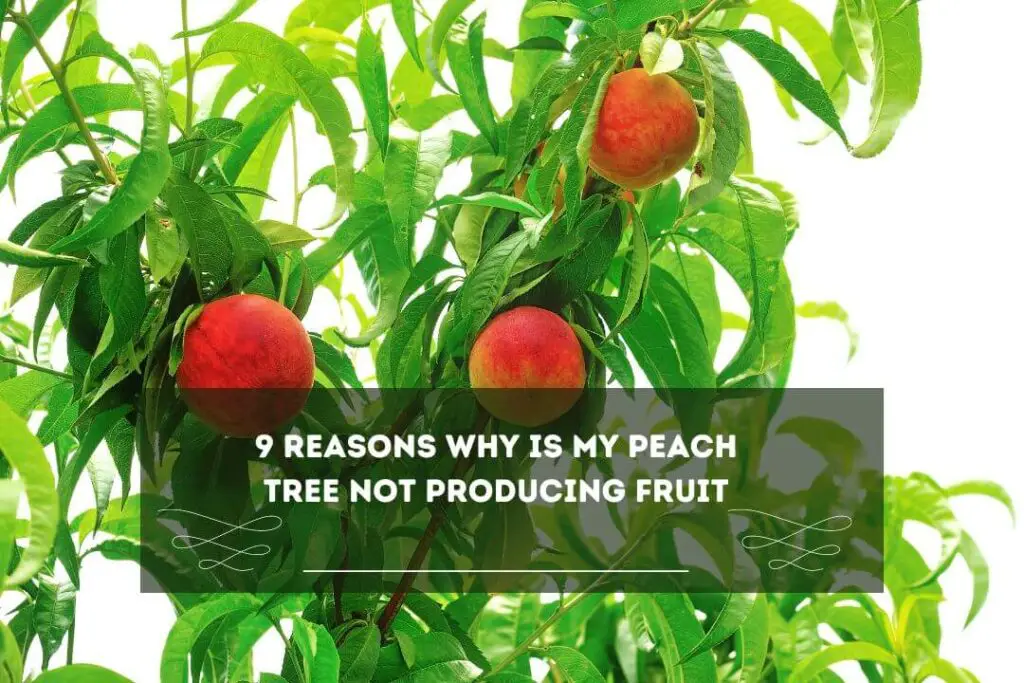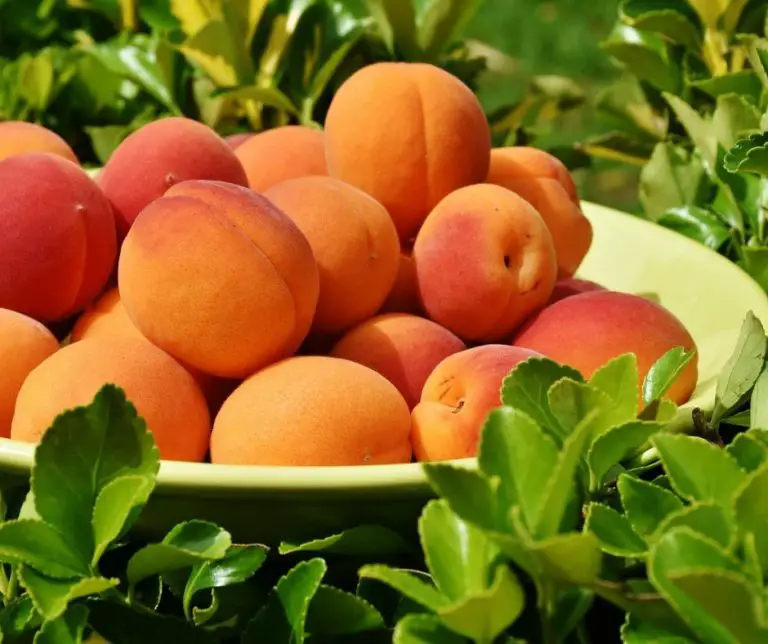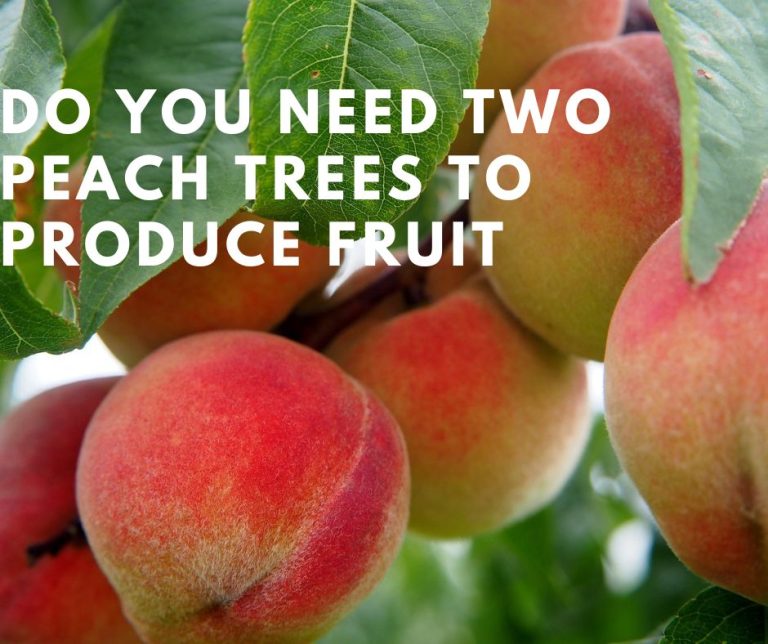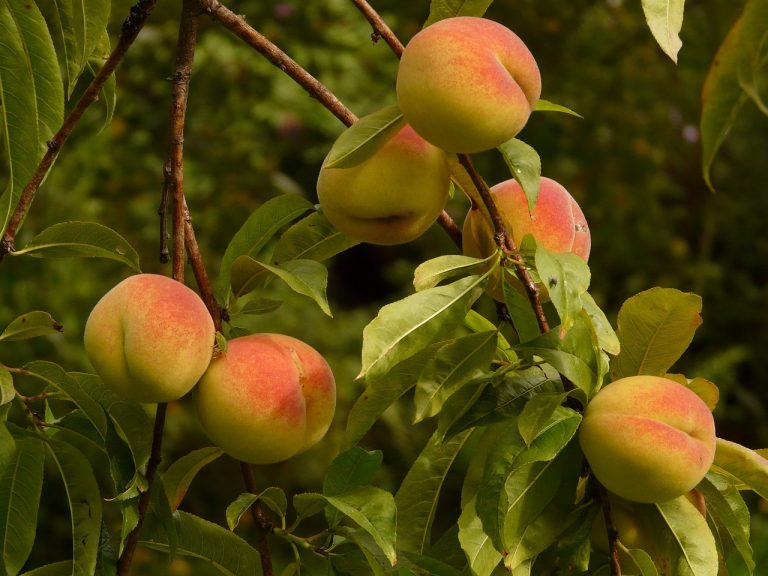You are in the right article if you are worried about peach trees not producing enough fruit. Many people get tired of waiting for their trees to produce fruit. In this article, I will answer ‘why is my peach tree not producing fruit’ to help you overcome this challenge and make the juicy peaches you crave.
Firstly, we need to understand what might affect the fruit grown in your peace tree and then take appropriate measures to prevent or treat the problem.
To be a successful gardener, you should always have proper knowledge and understanding of how to increase the chances of abundant peach trees fruiting in the future. Let’s talk about nine reasons why my peach tree is not producing fruit.
9 Reasons Why Is My Peach Tree Not Producing Fruit

Over Fertilisation
I don’t need to tell you that over-fertilization will always promote issues with your free help and growth. Do note that over-fertilization with high-nitrogen fertilizers can reduce fruit yield and quality in peach trees.
According to a study published in the MDPI, excessive nitrogen can make you plant more susceptible to disease attacks like fire blight. It can cause peach trees to focus on producing new shoots and leaves rather than paying attention to their fruits.
The study also proves that applying too much nitrogen to peach trees can drastically reduce fruit yield by up to 50%. I highly recommend following a systematic approach and sound practices when fertilizing your trees.
To avoid over-fertilization, you must first determine your peach tree’s nutrient requirements. And after that, you are free only to apply fertilizers that provide the necessary nutrients in the right amounts.
In addition, since lawn fertilizer tends to be high in nitrogen level, which can negatively impact the fruit production of your peach trees, it’s better to avoid using one around your trees as well.
Improper Pruning
I have repeatedly discussed the importance of proper pruning technique with the suitable pruning shear/machine in many of my articles. Proper pruning is undoubtedly essential for maintaining your peaches’ health and productivity.
Therefore if you have been practising improper pruning techniques, it may lead to a lack of fruit production. One common mistake you and many beginners often make is cutting off the ends of your tree branches to promote new growth.
This ultimately forces your tree to focus on producing new shoots, gains and leaves instead of focusing on fruit. On the other hand, if you consider removing the entire branches, it will help encourage fruiting.
According to ResearchJournal, the actual performance of peach trees depends heavily on proper pruning annually. Therefore, you should permanently remove one-third to one-half of the previous year’s growth in the dormant season resulting in the highest fruit yield in peach trees.
Suppose you are never provided with the benefit of pruning to your plant or don’t know when to prove your peach tree. In that case, you should consider checking out this article, where I have discussed the climatic condition of Northern and Southern California, affecting the best time to prune peach trees in California.
Low Temperatures
Any unfavourable weather or sudden temperature change will affect your peace tree health and fruit yield. Therefore you should know that low temperatures during the winter can safely damage the flower buds of your peach trees.
This will prevent them from opening, which could lead to few or no fruit. According to UGA Extension pecan specialist Lenny Wells, peach trees require a certain number of hours below 45 degrees Fahrenheit to break down growth inhibitors in buds, which allows them to produce fruit in the spring. However, you should know that peach trees with prolonged temperatures below 45°F (7°C) can also experience reduced fruit set.
In addition, research has also proved that hot winter temperatures can also do extreme damage to the buds if the low temperature is followed by a sudden drop, reducing fruit production.
While researching, I also ended up with a study published in the journal climate change. It discussed warming temperatures in the fall & spring seasons, primarily associated with low fruit yields in peach trees.
Lack of Chilling Hours
As per MDPI, The effective chilling temperatures range from 0 to 7 °C for most deciduous fruit. But, UGA says that most peach varieties require between 550 and 1050 chilling hours. Depending upon your peach tree variety, it will also need a certain amount of cold or chilling hours.
Chilling hours are the hours below a specific temperature range required to break dormancy & initiate bud break in the spring. If your peach tree is not receiving enough chilling hours, it will have deformed or no fruit.
However, research also states that climate change might be the prominent reason behind the reduced number of chilling hours available to your peace tree, which could lead to decreased fruit production and yield.
Research has also shown that climate change may reduce the number of chilling hours available to peach trees, leading to decreased fruit production. If you notice the peach tree fruits are tiny, you should consider reading our articles where we have discussed: 9 Reasons Why Are My Peaches Small?
Residual Effects of the Previous Season’s Crop
If your peach tree had produced a heavy crop last season, it might also have little to no energy to produce flower buds for the following harvest. Any tree that produces a heavy crop usually takes much of its power to support it, leaving them with minor allergies to making more buds for the following year’s crop.
If the peach tree is not producing fruit, look for signs of residual effects of the previous season. This is why I highly recommend that people always consider thinning the fruit in the years of heavy yield, which usually helps distribute the tree resources evenly.
Believe it or not, many researches & studies show that thinning fruit can increase the size and quality of the remaining fruit. To know more about this, here is a study published in the journal of the American society for horticultural science. This journal states that thinning peach trees usually increases the remaining fruit’s overall size, firmness, and sugar content.
Overcrowding
Do you know that overcrowding can also reduce fruit production in peach trees? If too many trees are too close together, they will compete for resources like sunlight, water, and nutrients, ultimately reducing fruit production.
I don’t know if you’re familiar with this. Still, North Carolina State University conducted quick research and found that peach trees should be planted at least 15 feet apart to avoid overcrowding.
Not Enough Sun
Look if your trees are under the shade of a building or any other crossing obstacle. Since peach trees require full sun to produce fruit, they can have little to no fruit if your tree is not getting enough sunlight.
According to the University of Georgia Extension, you must provide at least 8-10 hours of direct sunlight daily to your peach tree, especially in the fruiting season.
Pest & Disease Issues
Like any other tree, your peach trees are susceptible to various pests and diseases that can directly/indirectly affect fruit production. Common problems that can cause fruit loss in your peach tree include peach tree borers, aphids, and mites, including peach leaf curl and brown rot. If peach tree fruits are rotting before ripening, your plant will likely be affected by diseases or pests.
Not paying attention to the signs and symptoms of pest & disease issues in peach trees will damage fruit and cause premature leaf drop, which is unsuitable for trees’ overall health and ability to produce heavy yield.
It’s essential to monitor your peach trees regularly for signs of pest and disease problems by taking appropriate measures to prevent or treat them.
Therefore, you might have to use pesticides or remove infected/damaged plant parts. Also, I will recommend adjusting irrigation practices to reduce humidity levels, which are the main culprit for promoting disease growth.
You must pay attention to your peach tree’s health for better harvesting. If your plant is suffering from any pest infestation or disease, Below are a few articles that you might find helpful in treating and preventing one.
5 Reasons Why Are My Peach Tree Leaves Curling
3 Best Homemade Spray For Peach Leaf Curl
What Insect Is Eating My Peaches? [4 Common Insects & Solution]
Age
I don’t need to tell you that young peach trees generally take a few years to produce fruit. According to Angi & Quora, peach trees can take up to 3 & 4 years to bear whole fruit at their best.
On the other hand, too old trees may produce less fruit due to factors like disease or declining vigour. Therefore I first recommend you determine the actual age of your peach tree and then take appropriate measures to promote its health and productivity.
Conclusion
I tried my best to give you all the reasons behind ‘why is my peach tree not producing fruit’ Since there can be several factors that can contribute to a peach tree not producing fruit, including over-fertilization, improper pruning, low temperatures, lack of chilling hours, and many more, never mind having an arborist consultation if you are unable to find the actual cause.
I tried my best to make you understand all these factors as quickly as possible to help you take appropriate measures and increase the chances of growing healthy peach trees with abundant fruit yield.
If you find this article helpful, then consider sharing it. Your share will help many people learn about what they might be doing wrong and hindering their peach tree fruit yield. Do check our other helpful guide on peach tree care. See you in the next post; till then, take care and sound back.






